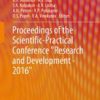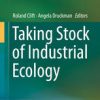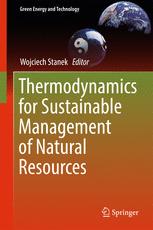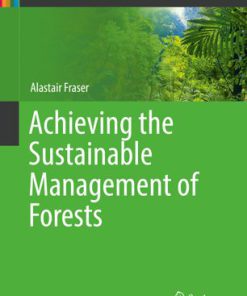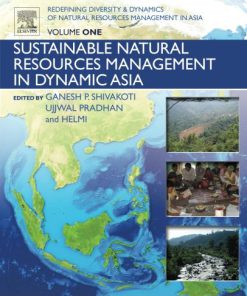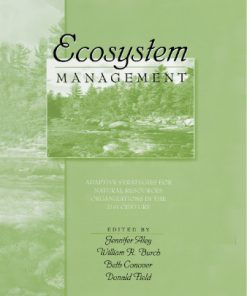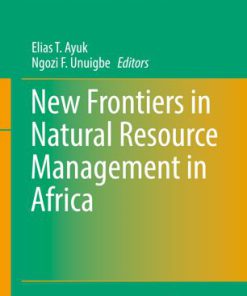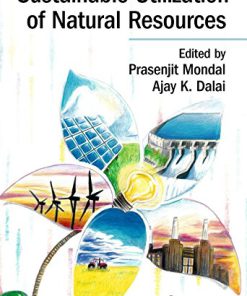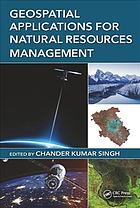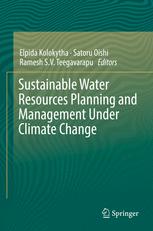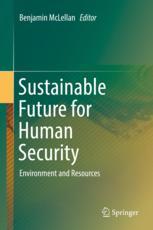Natural Resources Available Today and in the Future How to Perform Change Management for Achieving a Sustainable World 1st edition by Erik Dahlquist, Stefan Hellstrand 3319542638 9783319542638
$50.00 Original price was: $50.00.$25.00Current price is: $25.00.
Natural Resources Available Today and in the Future How to Perform Change Management for Achieving a Sustainable World 1st edition by Erik Dahlquist, Stefan Hellstrand – Ebook PDF Instant Download/DeliveryISBN: 3319542638, 9783319542638
Full download Natural Resources Available Today and in the Future How to Perform Change Management for Achieving a Sustainable World 1st edition after payment.
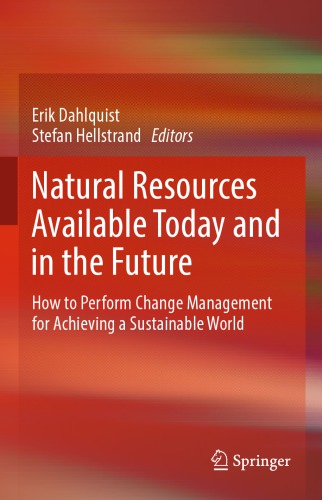
Product details:
ISBN-10 : 3319542638
ISBN-13 : 9783319542638
Author: Erik Dahlquist, Stefan Hellstrand
This book focuses on providing an overview of all our available natural resources, considering the sustainability and potential for power generation of each. Energy efficiency prospects of each natural resource are examined in the context of society’s key energy needs- Heating/cooling, Electric Power, Transportation and Industrial Production. Geography, climate and demographics are all discussed as key vectors impacting the comparative opportunities for self-sustenance around the globe. The authors provide in-depth coverage of renewable energy upscale and energy efficiency improvements in industry and society within a historical context, including a keen look at the variable effectiveness of different policy tools that have been used to support the transition away from unsustainable resource use. Finally, suggestions for more sustainable futures are provided, from improved policy measures, to new technological horizons in areas from offshore wind and marine energy to biogas and energy storage.
Natural Resources Available Today and in the Future How to Perform Change Management for Achieving a Sustainable World 1st Table of contents:
Chapter 1: System Perspective
1.1 Introduction
1.2 Countries of the World: Countries Grouped in Different Categories
1.3 Sustainable Development of Cities and Societies
1.4 Economy
1.4.1 Taxes and GINI-Numbers
1.4.2 Inflation
1.4.3 GNI
1.5 Different Cultures
1.6 Corruption
1.7 CO2 Emissions and Climate Effects
1.8 Science and Communication
1.9 Railways and Other Transportation
1.10 Sustainable Industry
1.11 Regional Development
1.11.1 Africa
References
Chapter 2: The Challenges of Measuring Sustainability Performance
References
Chapter 3: Population Development, Demography and Historical Perspective
3.1 Population Development
3.1.1 Conclusions
3.2 Historical Perspective
3.2.1 Food Development
References
Chapter 4: Biologic Resources
4.1 Introduction
4.1.1 Overview Over Land Use
4.2 Natural Capital Land
4.2.1 Global Distribution
4.2.2 Summary and Discussion
4.3 Some Inputs to Agriculture
4.3.1 Use of Fertilisers
4.3.2 Use of Biocides
4.4 Production of Food
4.4.1 Overview
4.4.2 Productivity in Cereal Production Related to Land and Fertilisers
4.4.3 Animal Production
4.5 Production of Specific Important Crops
4.5.1 Soybean
4.5.2 Rice
4.5.3 Wheat (Triticum spp)
4.5.4 Corn (Zea Mays)
4.5.5 Barley, Rye and Oats
4.5.6 Oil Crops
4.5.7 Sugar Cane
4.5.8 Cassava
4.5.9 Energy Crops
4.5.10 Quorn
4.6 Consumption of Food
4.6.1 Cereals and Meat
4.6.2 Capture and Consumption of Fish
4.7 Environmental Recycling Agriculture (ERA)
4.8 Biomass Production in Northern Europe
4.9 Algae
4.10 Crop Improvements
4.10.1 GMO
4.10.2 Improvement of Harvest Yields
4.11 Use of Insects as Food
4.12 Forest Resources
4.13 Water Resources
4.14 Summary
References
Chapter 5: Energy Resources and Regional Balances
5.1 Global Overview of Energy Resources and Conversion Capacity
5.2 Renewable Energy: Wind Power and Solar Power
5.2.1 Wind Power
5.2.2 Solar Power, PV
5.2.3 Biomass Conversion
5.3 Energy Situation in Different Countries and Regions
5.3.1 EU27 Energy Situation 2014 and Onwards
5.3.2 EU27: An Overall Energy Balance
5.3.3 China: Today and in the Year 2050
5.3.4 India
5.3.5 USA
5.3.6 Brazil
5.3.7 Africa south of Sahara
5.3.8 Other Regions
5.3.8.1 Global Perspectives
References
Chapter 6: Nonorganic and Fossil Resources: Known and Estimated Resources
6.1 Metals
6.1.1 Aluminum (Al)
6.1.2 Calcium (Ca)
6.1.3 Chromium (Cr)
6.1.4 Cobalt (Co)
6.1.5 Copper (Cu)
6.1.6 Gold (Au)
6.1.7 Iron (Fe)
6.1.8 Lithium (Li)
6.1.9 Magnesium (Mg)
6.1.10 Manganese (Mn)
6.1.11 Molybden (Mo)
6.1.12 Nickel (Ni)
6.1.13 Platinum (Pt)
6.1.14 Potassium (K)
6.1.15 Rare Earth Metals
6.1.16 Silver (Ag)
6.1.17 Sodium (Na)
6.1.18 Tin (Sn)
6.1.19 Uranium (U)
6.1.20 Vanadium (V)
6.1.21 Zinc (Zn)
6.2 Inorganic Materials Other than Metals
6.2.1 Boron (B)
6.2.2 Carbon (C)
6.2.3 Chlorine (Cl)
6.2.4 Fluorine (F)
6.2.5 Halogens
6.2.6 Hydrogen (H)
6.2.7 Nitrogen (N)
6.2.8 Oxygen (O)
6.2.9 Phosphorous (P)
6.2.10 Silica (Si)
6.2.11 Sulfur (S)
6.3 Fossil Organics Like Peat, Lignite, Oil, and Natural Gas
References
Chapter 7: Reuse and Circulation of Organic Resources and Mixed Residues
7.1 Introduction
7.1.1 First Case of Sorting Out the Household Biowaste in Finland 1984
7.1.2 Current Household Biowaste Treating in Helsinki and in Stockholm
7.2 Role of Microbes in the Circulation
7.2.1 Historical Background and Outcome of the REMOWE and ABOWE Projects
7.2.2 What Is Biorefinery Technology? – Theoretical and Practical Considerations
7.2.3 Special Features of the Circulation Phenomena
7.2.4 Biogas
7.2.5 Fuel Cell Cars
7.2.6 Circulation of Agricultural Wastes
7.2.7 Combined Incineration with Circulation Means
7.3 Perspectives from the EU Down to National and Regional Level
7.3.1 EU Waste Framework Directive
7.3.2 The EU Circular Economy Package
7.3.3 Finnish National Waste Plan
7.3.4 Ban for Landfilling of Organic Waste
7.3.5 A Municipalities’ Joint Waste Management Authority
7.4 Statistics of Waste Resources Globally and Examples from Finland
7.4.1 Global Statistics of Waste Amounts
7.4.2 Municipal Solid Waste
7.4.3 Example of a Producer Responsibility System
7.4.4 Metals
7.4.5 Plastics
7.4.6 Paper
7.4.7 Food Waste/Biowaste
7.4.8 Example of a Campaign to Enhance Biowaste Separate Collection
7.4.9 E-waste
7.4.10 Textile Waste
7.4.11 Mixed Waste
7.4.12 Construction and Demolition Waste
7.5 Conclusion
References
Chapter 8: Energy, Different Forms
8.1 Production/Conversion
8.1.1 High Temperature Gasification
8.1.2 Biogas Production
8.1.3 Biodiesel
8.1.4 Ethanol
8.1.5 Waste to Energy
8.1.6 Pyrolysis and Torrefaction. Biochar.
8.1.7 Bio Refineries and Buthanol
8.1.8 Measurement of Energy Properties
8.1.9 Combustion and CHP
8.1.10 Energy Pathways and New Applications for Biomass
8.2 Use of Energy
8.3 Transportation with Personal Vehicles
8.4 Transportation of Goods
8.4.1 Industry Use
8.5 Energy Balance for the EU27
References
Chapter 9: Impact on Climate and Environment
9.1 Climate, Global Warming and CCS
9.2 Biologic Diversity
9.3 Environmental Issues and Waste Water Treatment
References
Chapter 10: Policies and Incentives – Natural Resources Available Today and in the Future: Ho
10.1 Economic Incentives and Controls Like Taxes, Subsidies, Feed-in-Tarifs, Tolls
10.2 Policies and Governance of Natural Resources
10.2.1 Introduction
10.2.2 The Need for Resource Efficient Governance of Natural Resources
10.2.3 Resource Systems Complexity as a Challenge in Governance and Policymaking
10.2.4 Valuing Natural Resources
10.2.5 Policy Processes and Instruments
10.2.6 Conclusions
References
Chapter 11: Is Circular Economy a Magic Bullet?
11.1 Introduction
11.2 The Concept of and Growing Interest in Circular Economy
11.3 The Main Components of Circular Economy
11.4 Outline of a Circular Economy
11.5 Is CE a Paradigm Shift?
11.6 Circular Economy, and Business Influence
11.7 Potential — Real or Imagined
People also search for Natural Resources Available Today and in the Future How to Perform Change Management for Achieving a Sustainable World 1st:
where can we get natural resources
natural resources in my area
natural resources available
natural resources available in the united states
natural resources today
Tags: Natural Resources, Available Today, the Future, Management, Sustainable World, Erik Dahlquist, Stefan Hellstrand
You may also like…
Engineering
Thermodynamics for Sustainable Management of Natural Resources 1st Edition Wojciech Stanek (Eds.)
Business & Economics - Industries
Engineering
Engineering
Engineering
Sustainable Future for Human Security Environment and Resources 1st Edition Benjamin Mclellan (Eds.)


